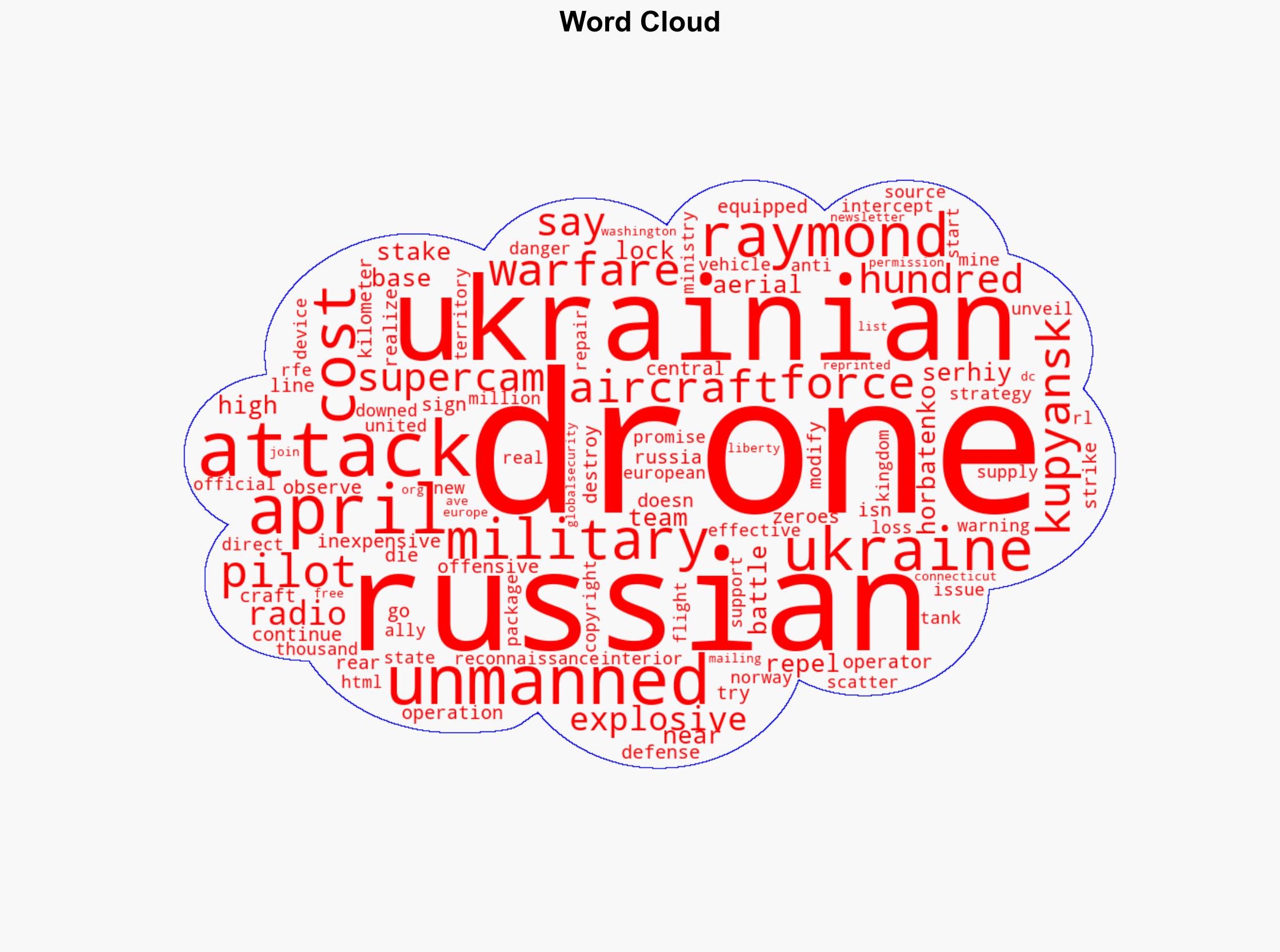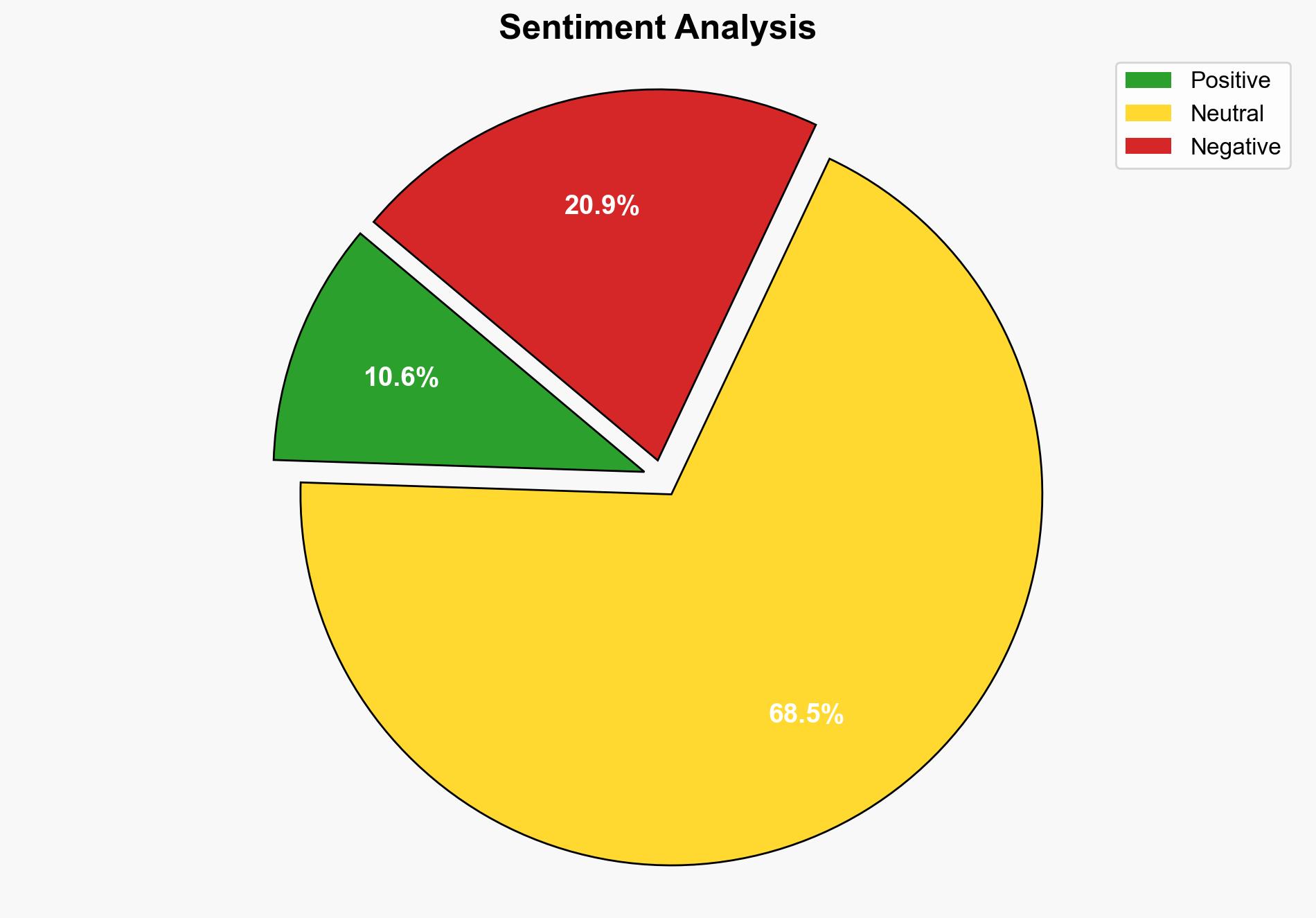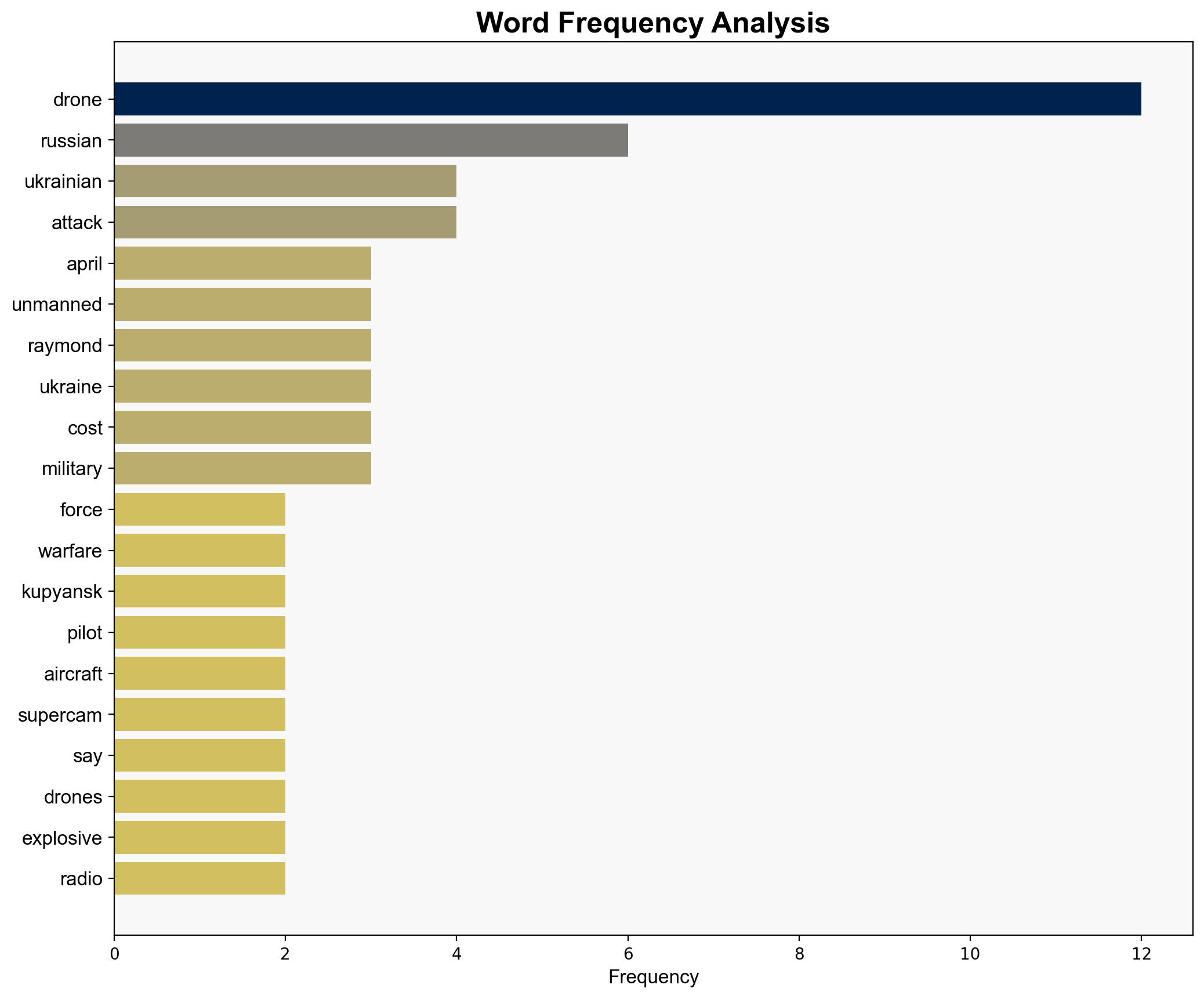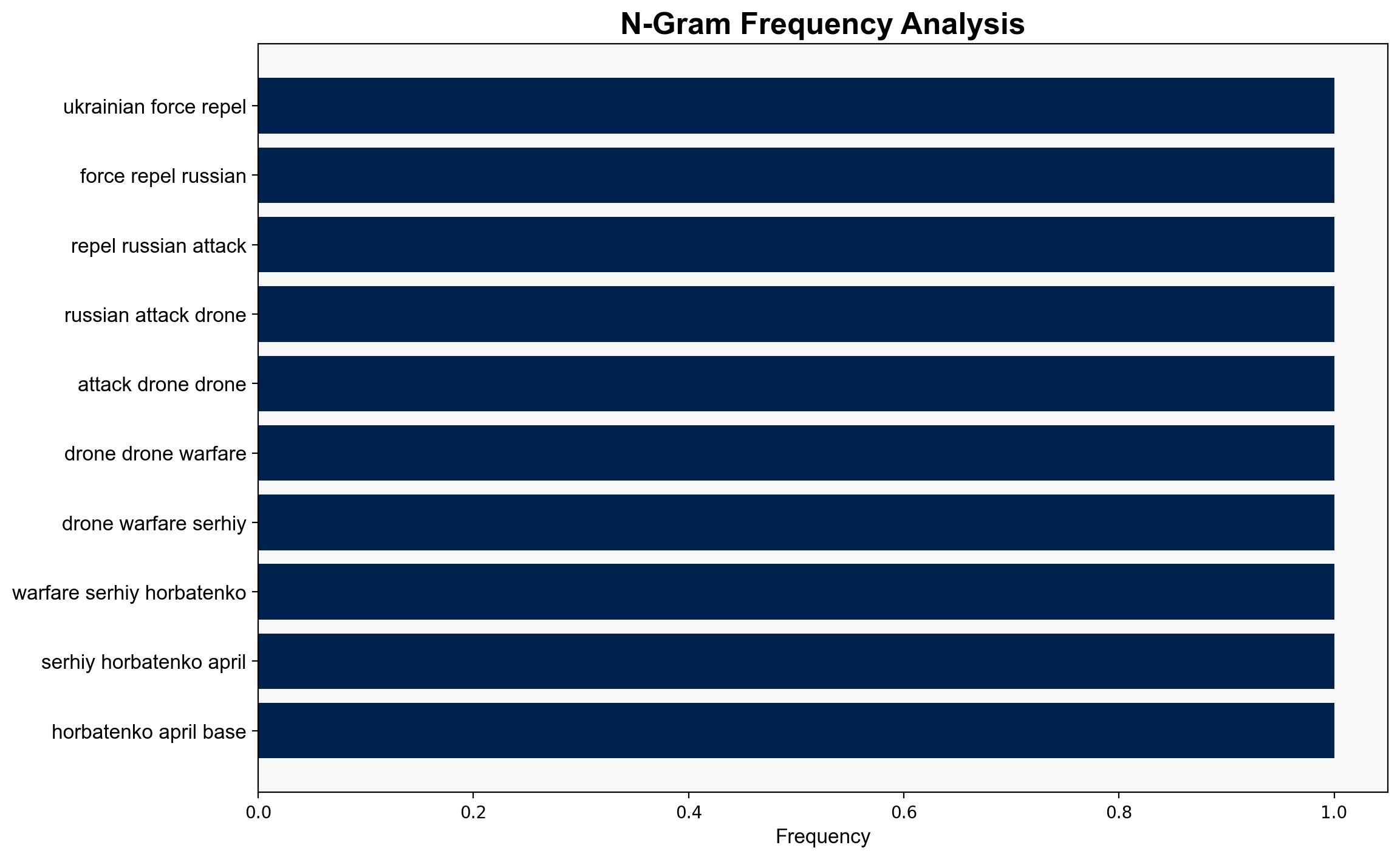Ukrainian Forces Repel Russian Attacks With Drone-On-Drone Warfare – Globalsecurity.org
Published on: 2025-04-12
Intelligence Report: Ukrainian Forces Repel Russian Attacks With Drone-On-Drone Warfare – Globalsecurity.org
1. BLUF (Bottom Line Up Front)
Ukrainian forces are effectively countering Russian drone attacks using cost-efficient drone-on-drone warfare. This strategy involves modifying inexpensive drones to intercept and destroy more expensive Russian unmanned aircraft. The approach has significant implications for the ongoing conflict, offering a cost-effective method to degrade Russian aerial capabilities. European allies, including the United Kingdom and Norway, are bolstering Ukraine’s drone capabilities with substantial military aid packages.
2. Detailed Analysis
The following structured analytic techniques have been applied for this analysis:
General Analysis
Ukrainian forces are utilizing a tactical advantage by employing low-cost drones to neutralize Russian drones, which are integral to Russian reconnaissance and attack strategies. The economic disparity in drone costs ($1,000 vs. $400,000) highlights the efficiency of Ukraine’s approach. The use of drones to scatter explosives by Russian forces presents a new threat vector, necessitating enhanced countermeasures and strategic planning by Ukrainian defense forces.
3. Implications and Strategic Risks
The increased use of drones in warfare poses significant risks to national security and regional stability. The potential for escalation in drone warfare could lead to broader conflicts involving neighboring countries. Economically, the destruction of high-cost Russian drones could strain Russian military resources, while the influx of European aid strengthens Ukraine’s defense posture. However, the proliferation of drone technology raises concerns about its use by non-state actors.
4. Recommendations and Outlook
Recommendations:
- Enhance Ukraine’s drone defense systems through technological upgrades and increased training for operators.
- Encourage international collaboration to establish regulations on drone warfare to prevent misuse by non-state actors.
- Invest in research and development of counter-drone technologies to mitigate emerging threats.
Outlook:
Best-case scenario: Ukraine successfully integrates European aid, bolstering its defense capabilities and deterring further Russian aggression.
Worst-case scenario: Escalation in drone warfare leads to increased civilian casualties and regional instability.
Most likely outcome: Continued tactical engagements with incremental gains for Ukrainian forces, supported by sustained international aid.
5. Key Individuals and Entities
The report mentions Serhiy Horbatenko and a drone pilot known as Raymond. European allies, including the United Kingdom and Norway, are identified as key contributors to Ukraine’s military aid.




